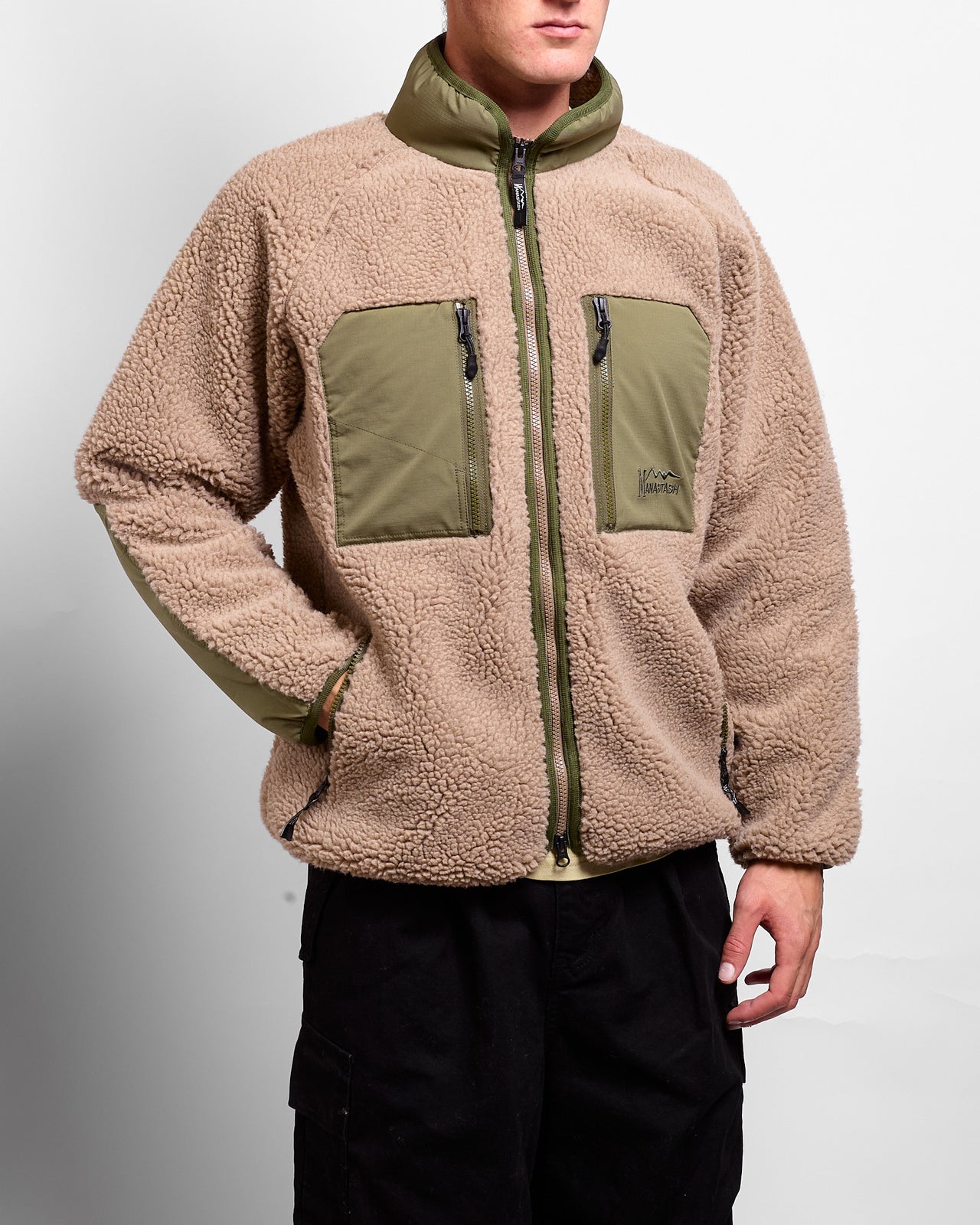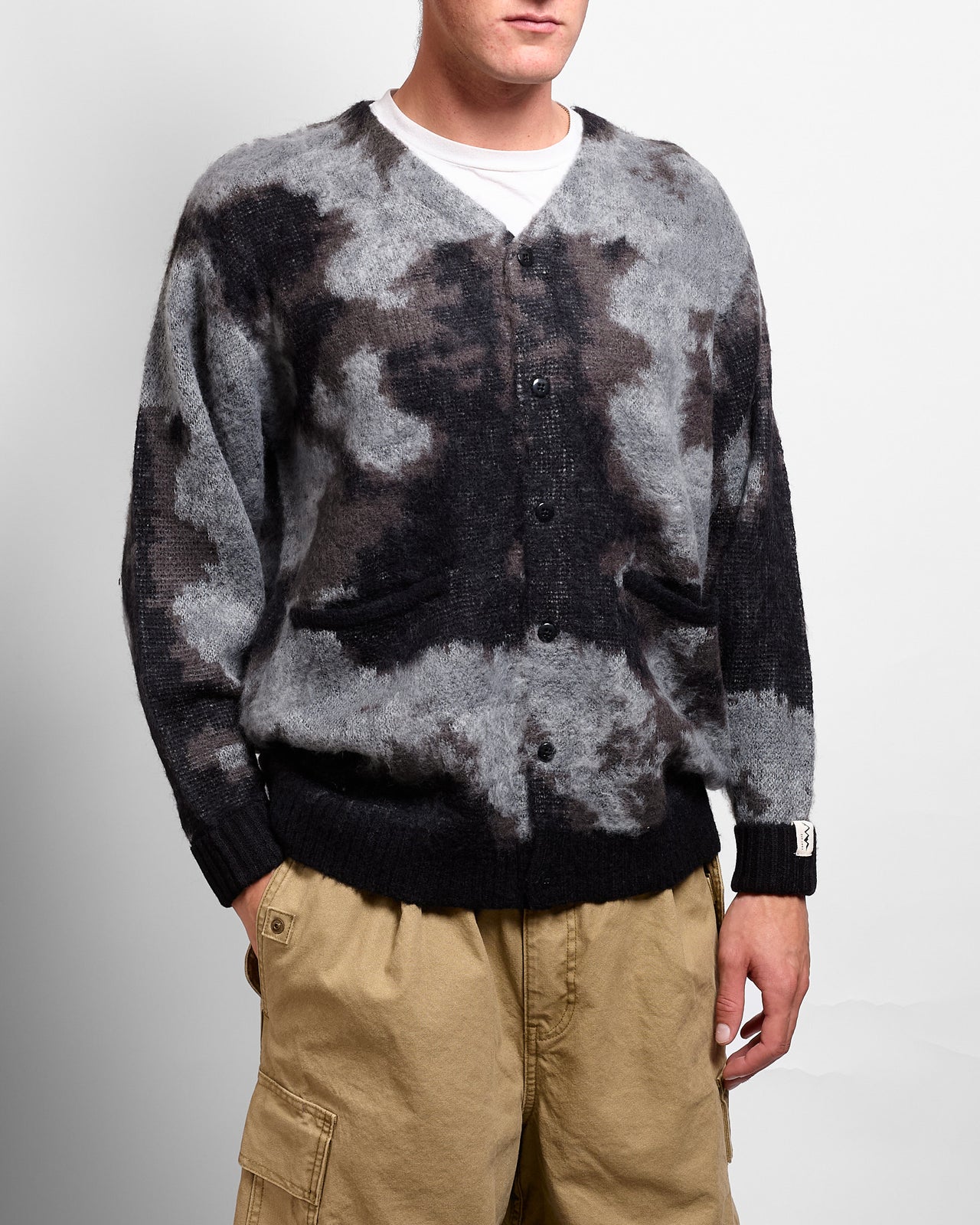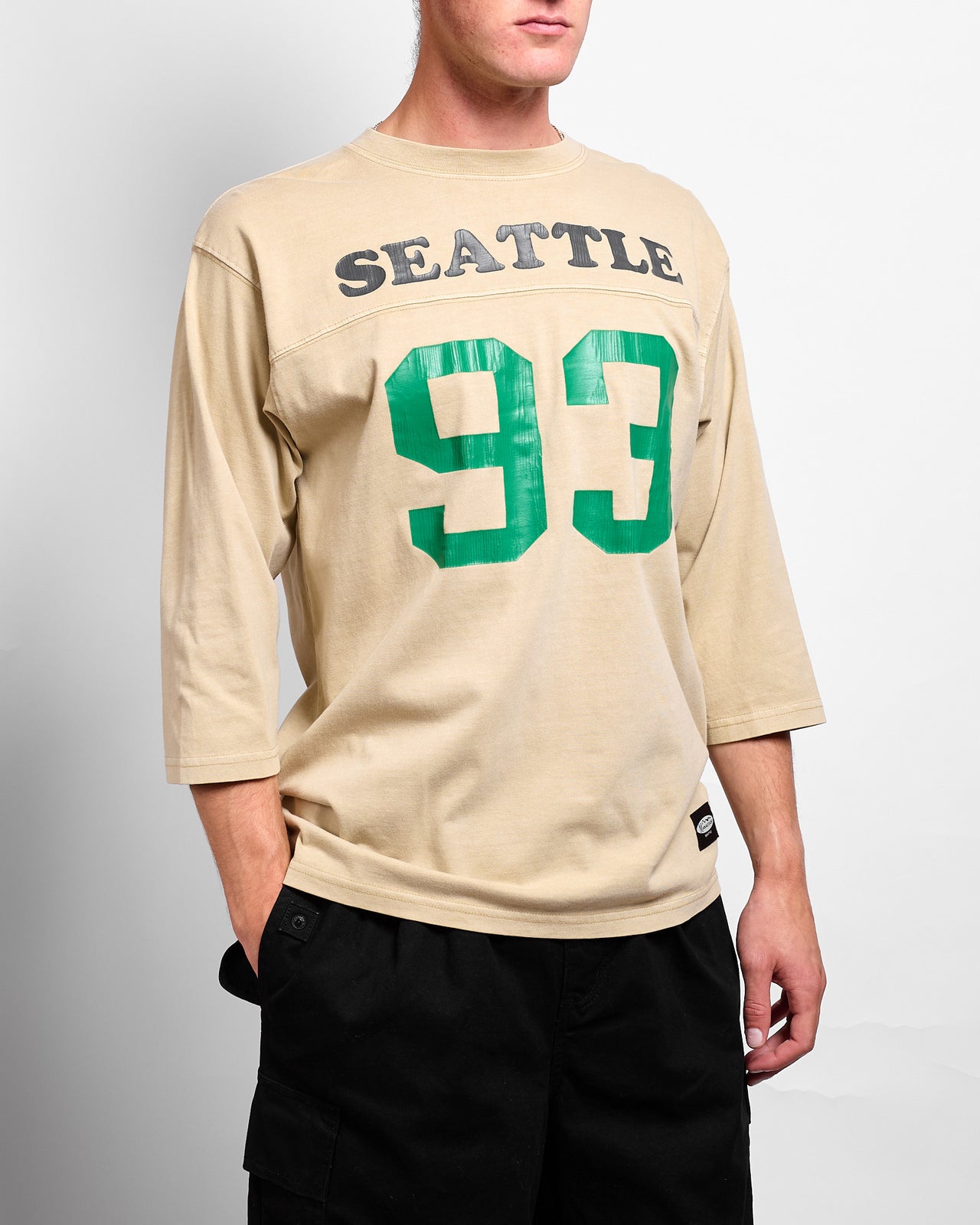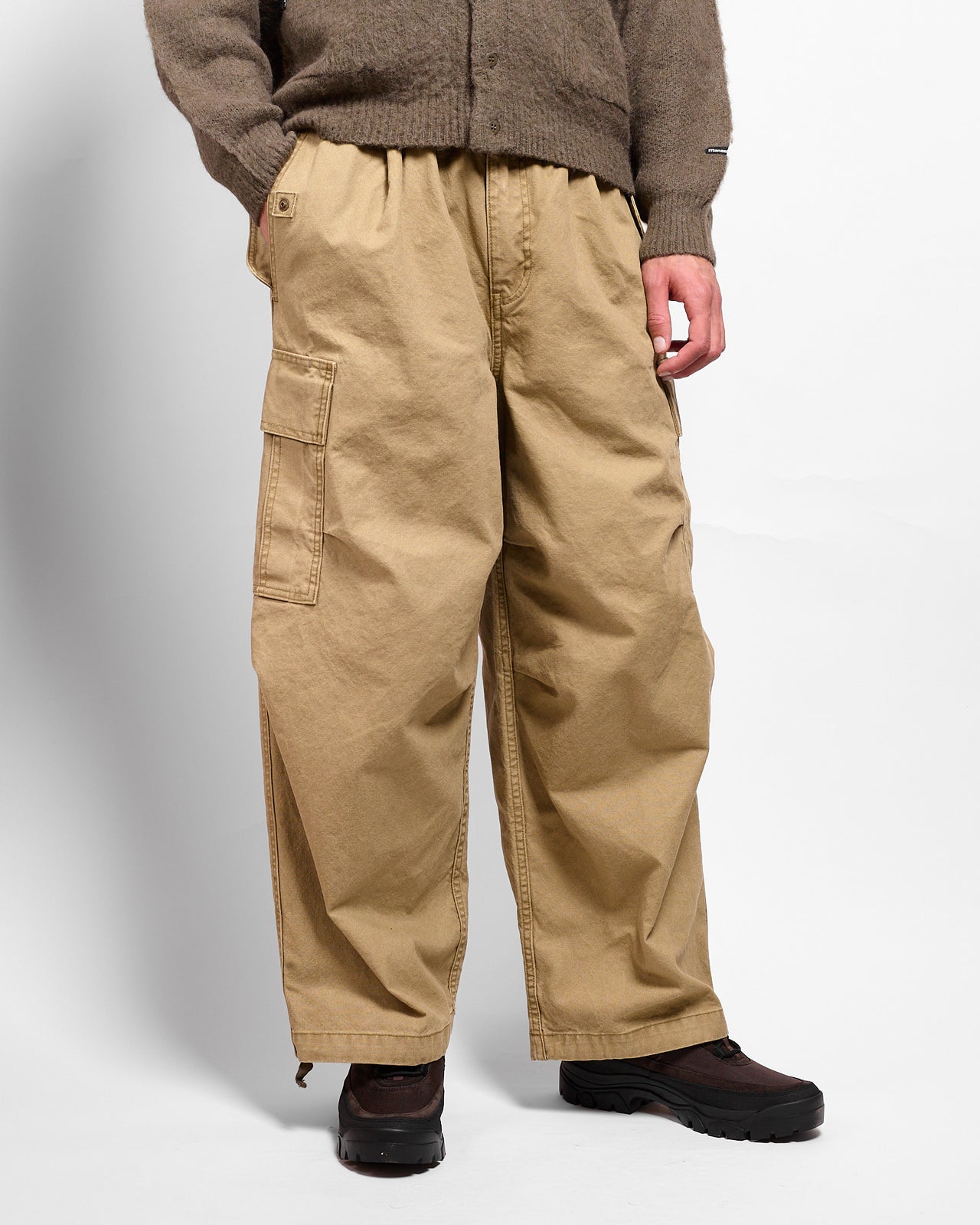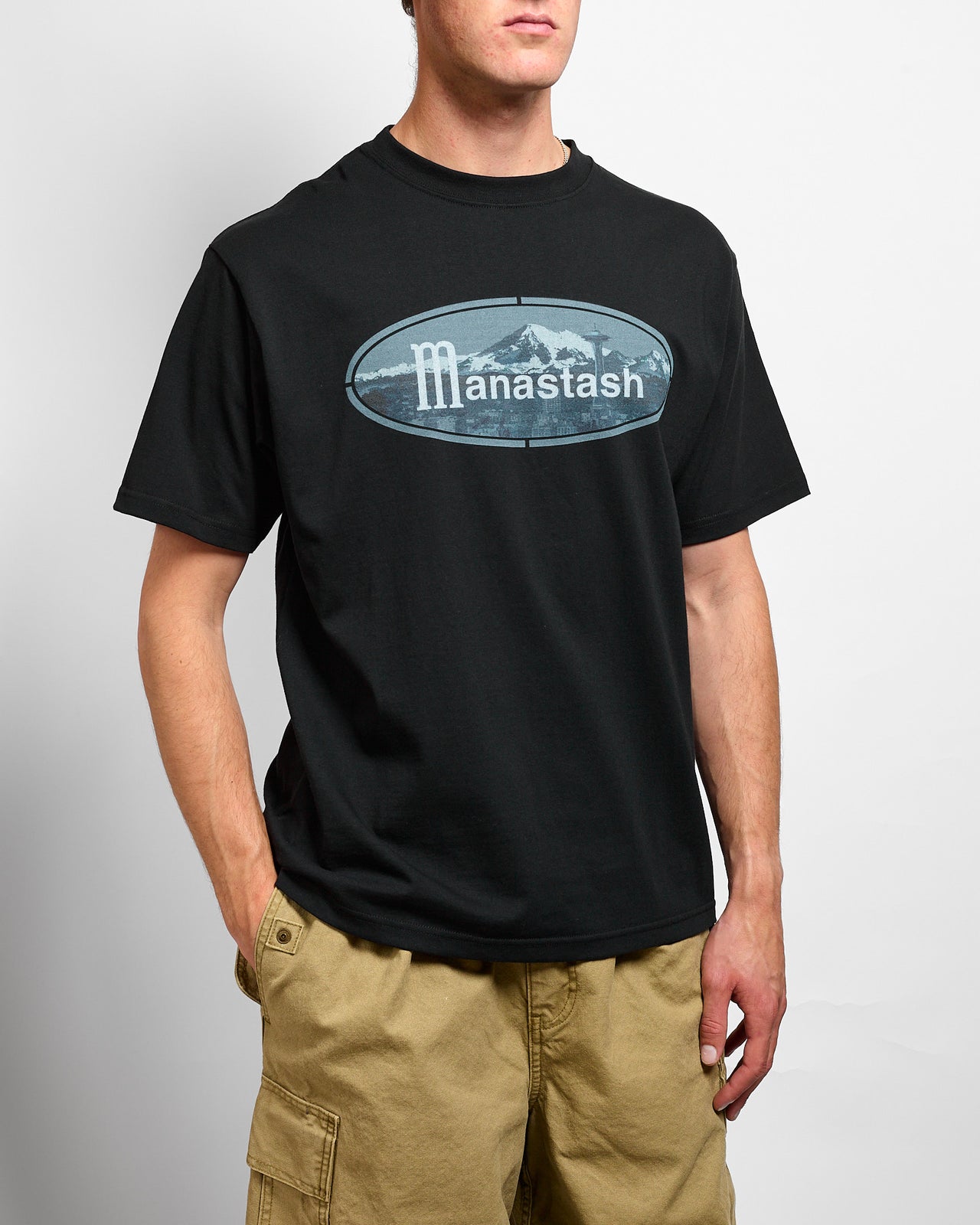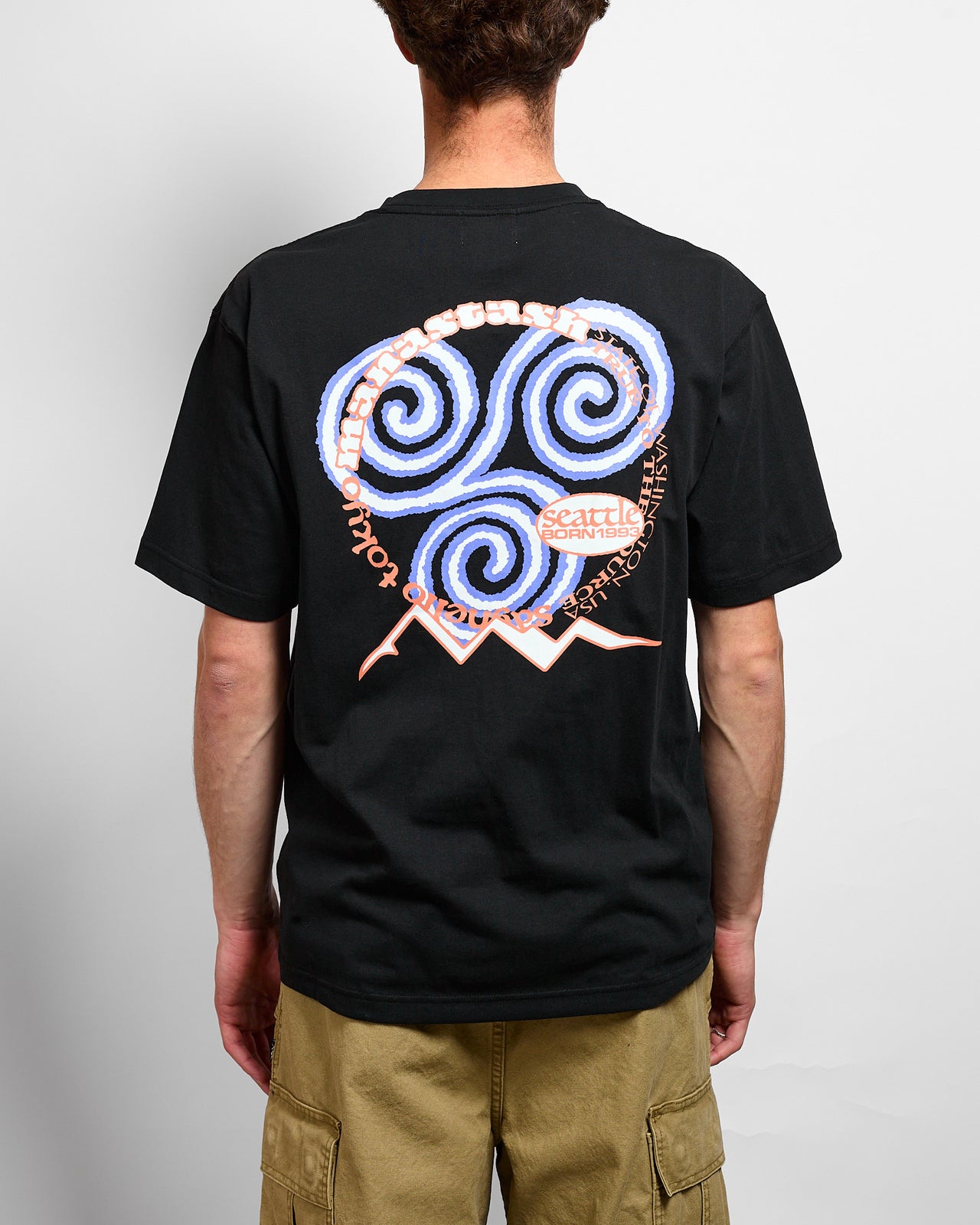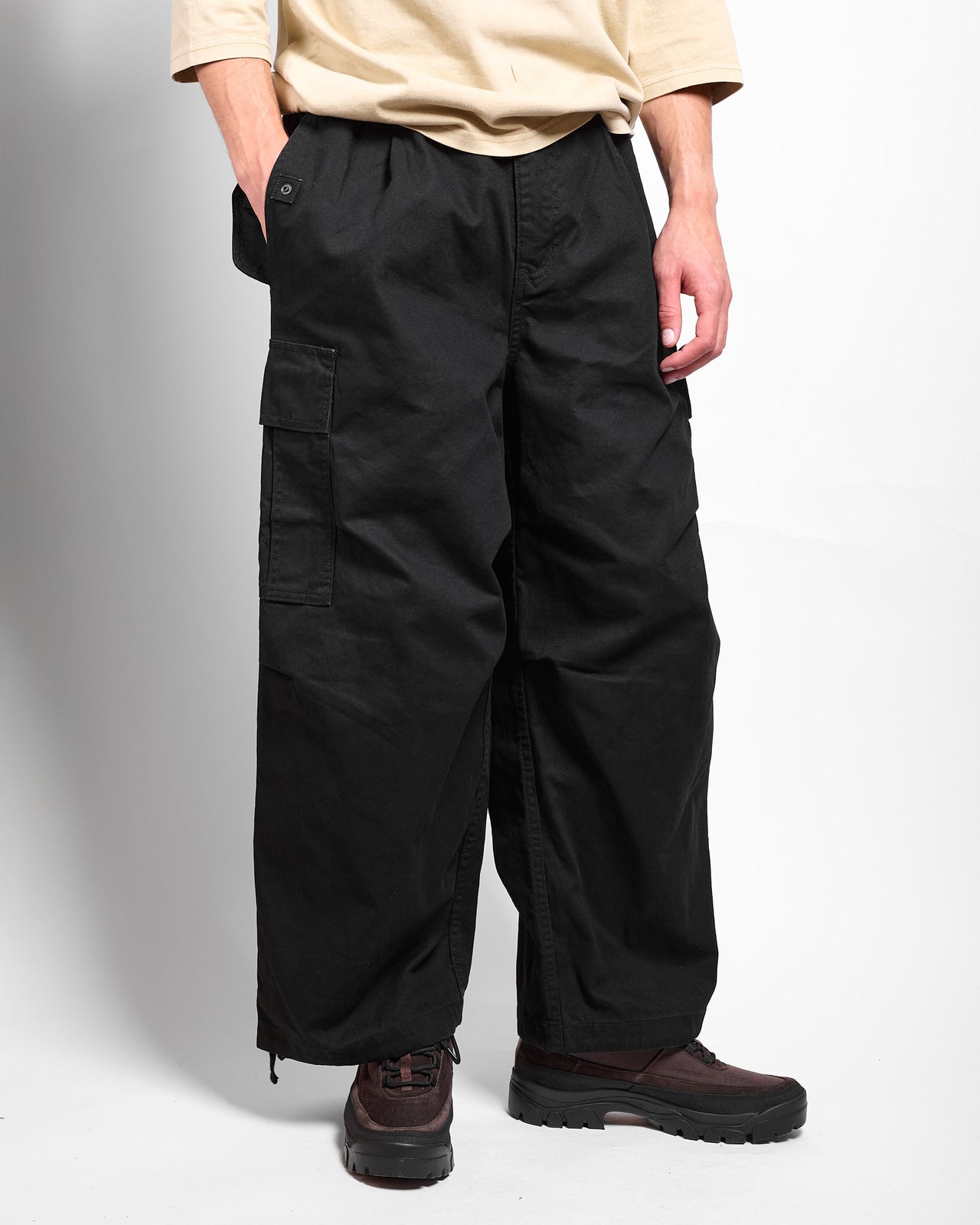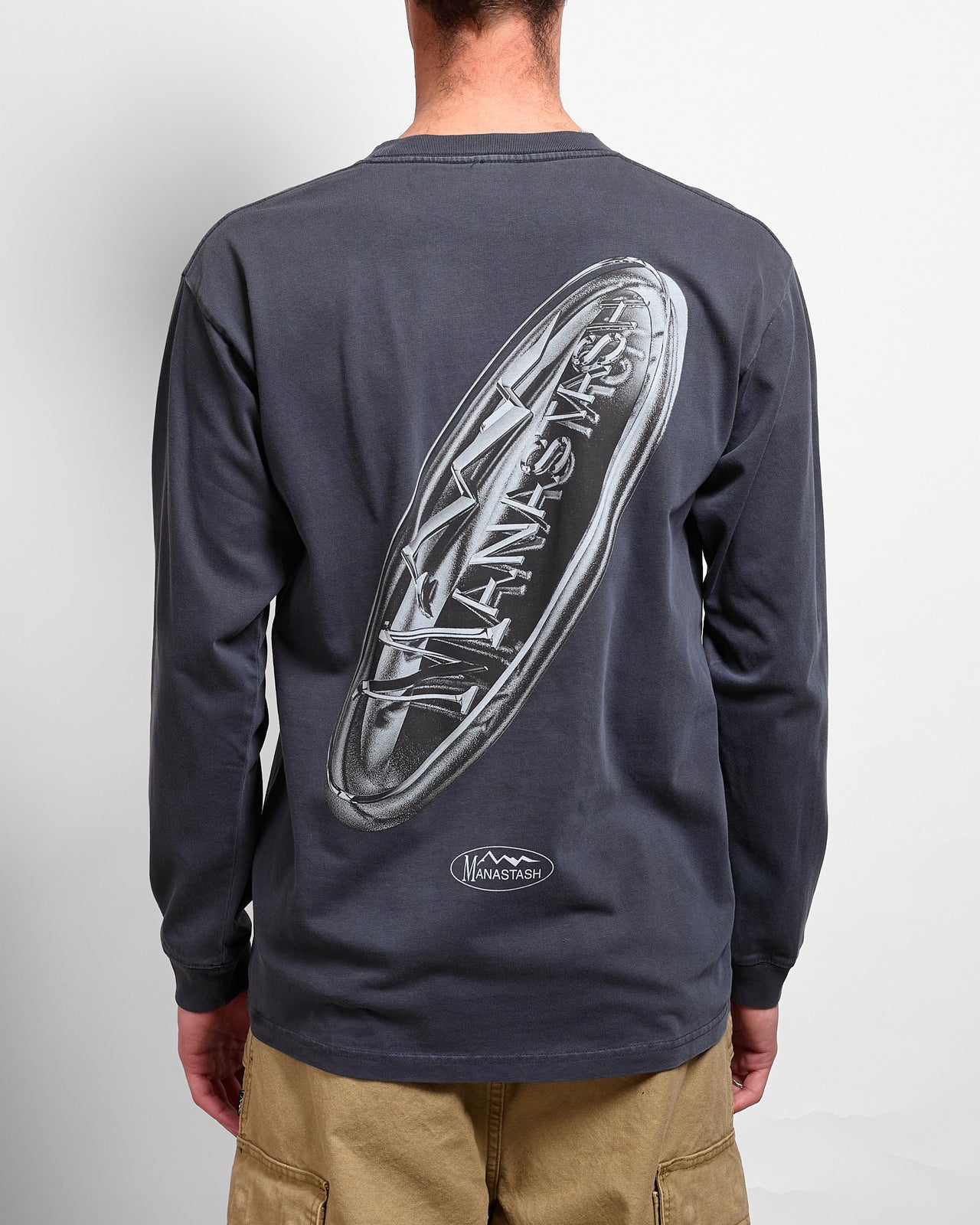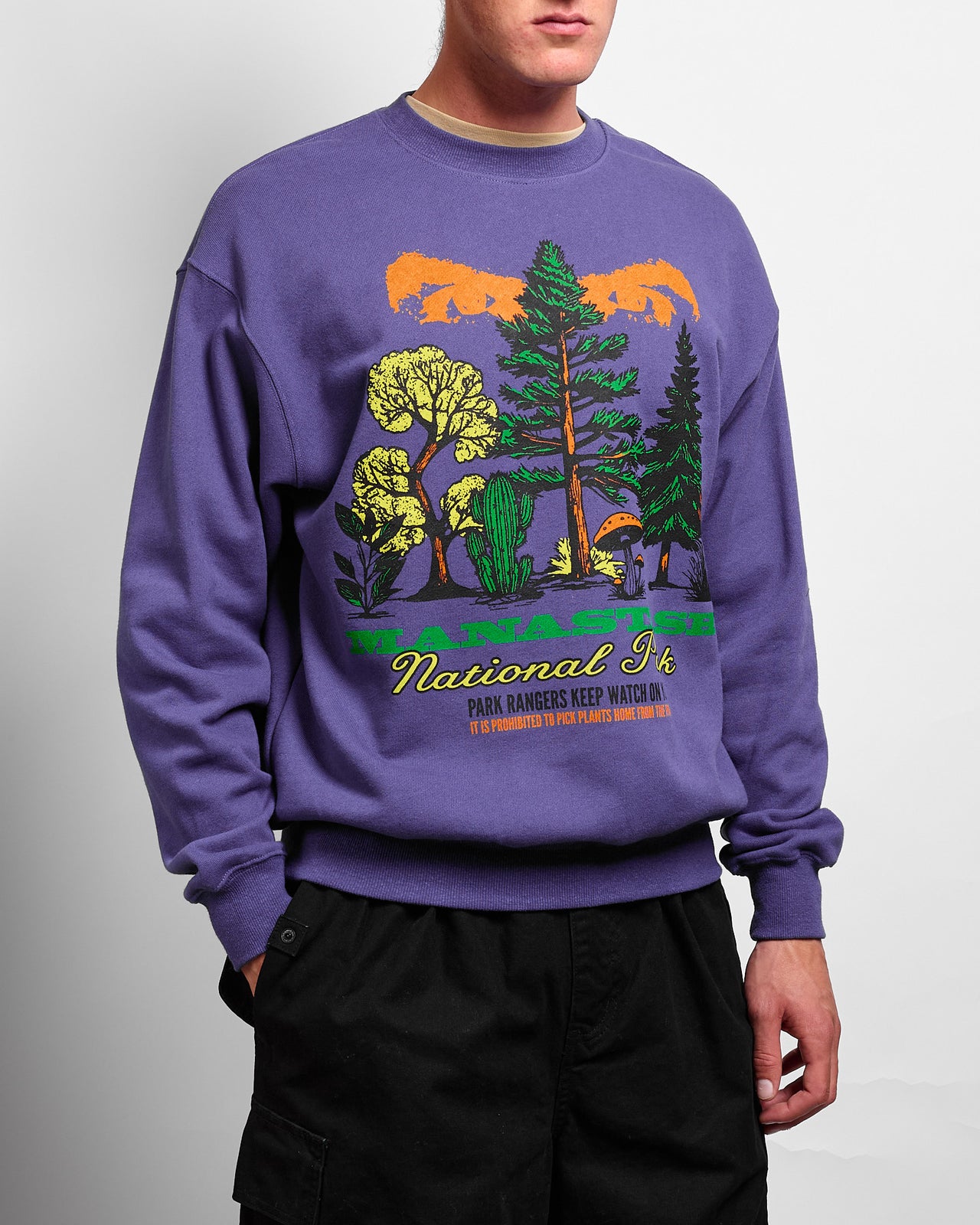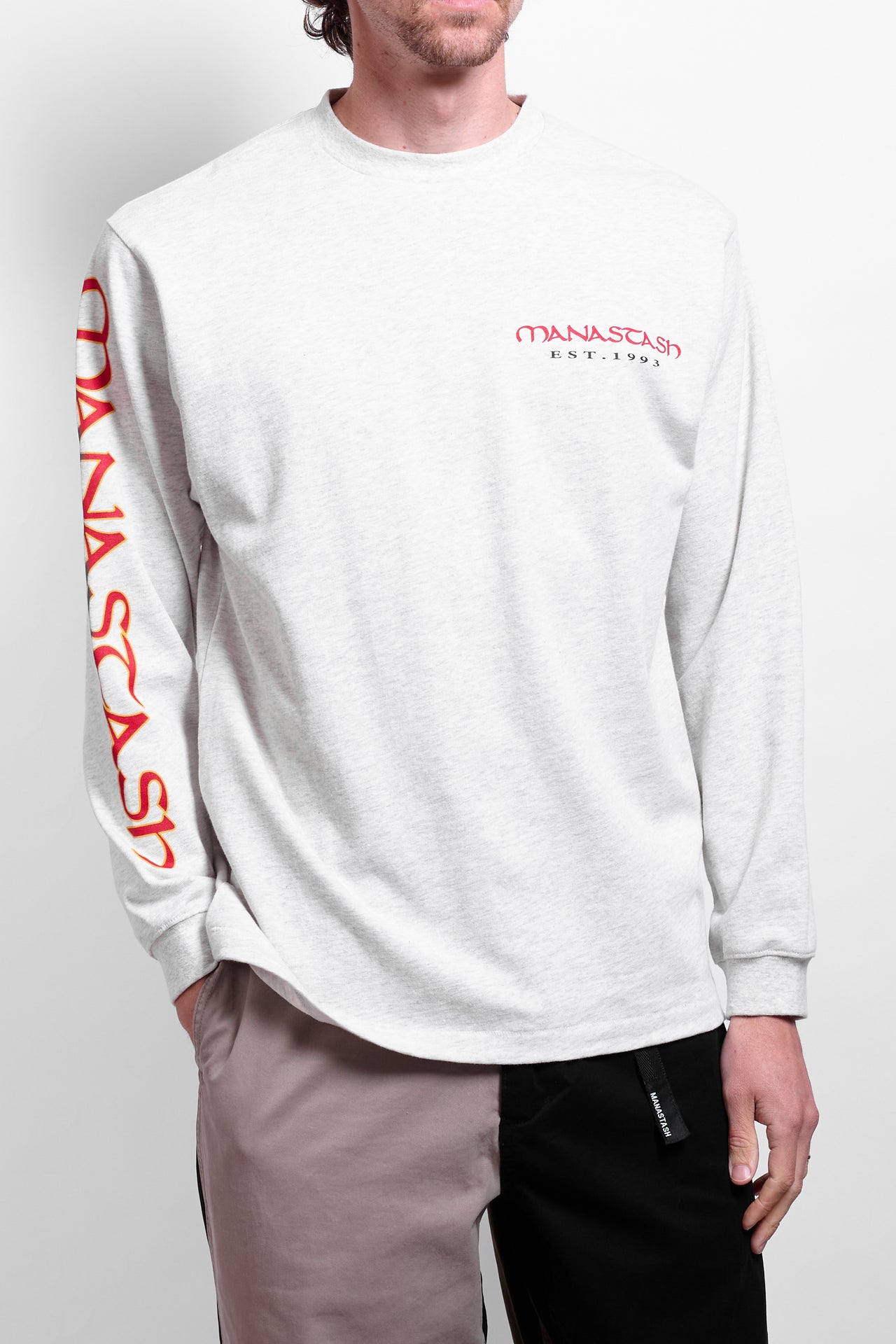Manastash is one of our favorite labels in the shop—an iconic 90s Seattle brand that's now based in Japan. We were fortunate to speak with founder Robert Jungmann, who went on to start Jungmaven, about Manastash's early days.
 (1996: The Manastash team installing a massive banner for their store on "The Ave" in Seattle's U District.)
(1996: The Manastash team installing a massive banner for their store on "The Ave" in Seattle's U District.)
What was the impetus for starting Manastash? How did you land on the name and logo?
I created Manastash to slow deforestation with hemp fashion, something that had never been done before. My family moved to Seattle in '84 which introduced me to the breathtaking natural beauty of the Pacific Northwest—and a community deeply rooted to preserving it. These experiences instilled in me a profound sense of sustainability.
Manastash, named after my favorite mountain bike ride, took its unique form around a pool table one night at the Naches Tavern as the Counting Crows played on Saturday Night Live in '94. The name embodies the spirit of adventure and the love for nature, the mountains in the logo design are the Stuart Range that you see when looking NW on top of Manastash Ridge. (Rob at Manastash Ridge)
(Rob at Manastash Ridge)
What did your first collection look like? What inspired these early designs? How was the initial reception?
Our inaugural collections were a fusion of Grateful Dead vibes and Patagonia's rugged spirit, infused with a healthy dose of tie-dye. Crafted to accompany our mountain biking and climbing adventures, our hemp clothing exuded the free-spirited essence of the '90s. In '96 I opened the first Manastash brick and mortar on the 'Ave,' across the street from the Red Light—where I always searched for vintage inspiration. During the '90s, our brand found its strongest following in Japan.
 (1996: Manastash's first catalog. Check out their URL and that American flag vest! Oh, and a snowboard made from hemp.)
(1996: Manastash's first catalog. Check out their URL and that American flag vest! Oh, and a snowboard made from hemp.)
 (Catalog cover, with "Manastash" misspelled. Glad I'm not the only one who fumbles spelling on printed stuff.)
(Catalog cover, with "Manastash" misspelled. Glad I'm not the only one who fumbles spelling on printed stuff.)
How and why did Manastash expand to Japan in the first place? Was there just a lot of interest over there?
In the '90s, Japan was an exciting market for small, Made in the USA brands. They recognized the uniqueness of hemp as a sustainable fiber. We partnered with an awesome distributor, Dice and Dice, based in Fukuoka, Japan, and together, we saw our business thrive as we created a whole new market.
What's more, we made quite an entrance at the Outdoor Retailer Show in Reno, NV that summer of '95 where we met. Our booth was a thrashed bamboo hut we had been hauling across the country for months exhibiting at NORBA mountain bike races, rock-climbing events and more. We showed up at the OR Show unshaven, longhairs, shirtless and shoeless tanned 20-year-olds who had just completed the first "Hemp Tour'', we were definitely living the part!
 (Jungmann with the team at Dice and Dice in Japan, who helped Manastash thrive in the country.)
(Jungmann with the team at Dice and Dice in Japan, who helped Manastash thrive in the country.)
 (1996: The Manastash team at the Cannabis Cup, hosted by High Times magazine in Amsterdam. Love the hemp brand flag.)
(1996: The Manastash team at the Cannabis Cup, hosted by High Times magazine in Amsterdam. Love the hemp brand flag.)
How heavily did hemp factor into your early work?
For over three decades, hemp has been my cornerstone, the quintessential ingredient in everything we create. It's been my unwavering passion, and the journey continues with Jungmaven today.
What was one of your favorite early Manastash styles?
Numerous styles hold a special place in my heart from Manastash, but in '98, when we introduced our first hemp tee shirt, I knew we had something special there. That's when I started envisioning the future of hemp clothing more clearly.
 (The Manastash booth at the Seattle Hemp Festival, circa 1997/98.)
(The Manastash booth at the Seattle Hemp Festival, circa 1997/98.)
What happened after the first few collections? How did the brand evolve?
Following our initial collection—which primarily featured bags and accessories—our brand underwent an evolution. We introduced recycled polar fleece jackets combined with hemp, expanded into a full range of pants, shorts, and various other clothing items. Our designs were influenced by prevailing industry trends, encompassing messenger bags, rock climbing gear, kayaking attire, mountain biking apparel and much more.
 (Cowboy Rob on the cover of Manastash's first Japanese advertisement, with the brand misspelled again. This photo was taken near the Gorge in central Washington State.)
(Cowboy Rob on the cover of Manastash's first Japanese advertisement, with the brand misspelled again. This photo was taken near the Gorge in central Washington State.)
What led you to sell the brand?
Selling the brand was a necessary step for me to embark on a journey of personal growth, which took me to live and surf in Costa Rica for five years while taking a break from the business world. I'm grateful for the choices that led me to Jungmaven.
 (The Manastash crew on Venice Beach)
(The Manastash crew on Venice Beach)
What came next? Jungmaven, or something else?
After Manastash, I founded Two Jupiters, specializing in blank hemp tee shirts, and in 2005 I launched Jungmaven.
What drives your process currently? What keeps you excited?
I thrive on designing, creating, and connecting people and their ideas. I'm always inventing ways to contribute to a healthier, more sustainable future through fashion. This is my endless well of inspiration.

